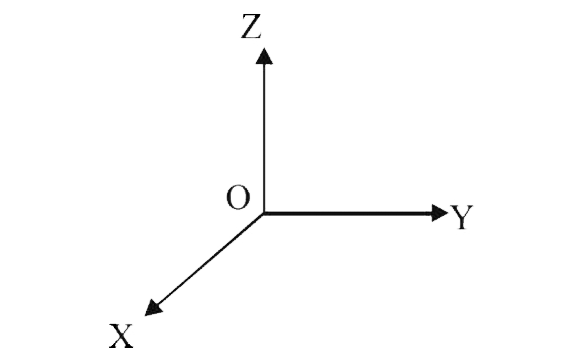A force of −Fˆk on O, the origin of the coordinate system. The torque about the point (1,−1) is.
 .
.
F(ˆi−ˆj)
−F(ˆi+ˆj)
F(ˆi+ˆj)
−F(ˆi−ˆj)
The correct Answer is:B
Step by step video, text & image solution for A force of - F hat k on O, the origin of the coordinate system. The torque about the point (1, -1) is. . by Physics experts to help you in doubts & scoring excellent marks in Class 11 exams.
Updated on:21/07/2023Similar Questions
Given four forces : →F1=3ˆi−ˆj+9ˆk →F2=2ˆi−2ˆj+16ˆk →F3=9ˆi+ˆj+18ˆk →F4=ˆi+2ˆj−18ˆk If all these forces act on a particle at rest at the origin of a coordinate system, then identify the plane in which the particle would begin to move ?
View SolutionThe magnitude of the torque exerted at origin by the force F=i+2j+k at the point (1,1,1) is ?
View Solution
Knowledge Check
A force of −F,ˆk acts on O, the origin of the coordinate system. The torque about the point (1,-1) is
 AF(ˆi−ˆj)B−F(ˆi+ˆj)CF(ˆi+ˆj)D−F(ˆi−ˆj)
AF(ˆi−ˆj)B−F(ˆi+ˆj)CF(ˆi+ˆj)D−F(ˆi−ˆj)A force of −F,ˆk acts on O, the origin of the coordinate system. The torque about the point (1,-1) is
 AF(ˆi−ˆj)B−F(ˆi+ˆj)CF(ˆi+ˆj)D−F(ˆi−ˆj)
AF(ˆi−ˆj)B−F(ˆi+ˆj)CF(ˆi+ˆj)D−F(ˆi−ˆj)A force of −Fˆk actgs on O, the origin of the coodinate system. The torque about the point (1,-1) is
 AF(ˆi−ˆj)B−F(ˆi+ˆj)CF(ˆi+ˆj)D−F(ˆi−ˆj)
AF(ˆi−ˆj)B−F(ˆi+ˆj)CF(ˆi+ˆj)D−F(ˆi−ˆj)
A force of −4FˆK acts O, the origin of the coordinate system. The torque about the point (1,−1) is
View SolutionA force Fˆk acts on O, the origin of the coordinate system. The torque of this force about the point is: (1,−1) is
View SolutionStatement-I : Magnitude of torque of a force about a given point does not depend upon the location of the origin of the co-ordinate system.
Statement II: Moment of couple is different for different points in its plane
View SolutionFollowing forces start acting on a particle at rest at the origin of the co-ordinate system
→F1=−4ˆI−5ˆj+5ˆk,→F2=5ˆI+8ˆj+6ˆk,→F3=−3ˆI+4ˆj−7ˆk and →F4=2ˆi−3ˆj−2ˆk then the particle will move
View SolutionFollowing forces start acting on a particle at rest at the origin of the co-ordinate system simultaneously →F1=−4ˆi−5ˆj+5ˆk,→F2=5ˆi+8ˆj+6ˆk,→F3=−3ˆi+4ˆj−7ˆk and →F4=2ˆi−3ˆk then the particle will move
View Solution
